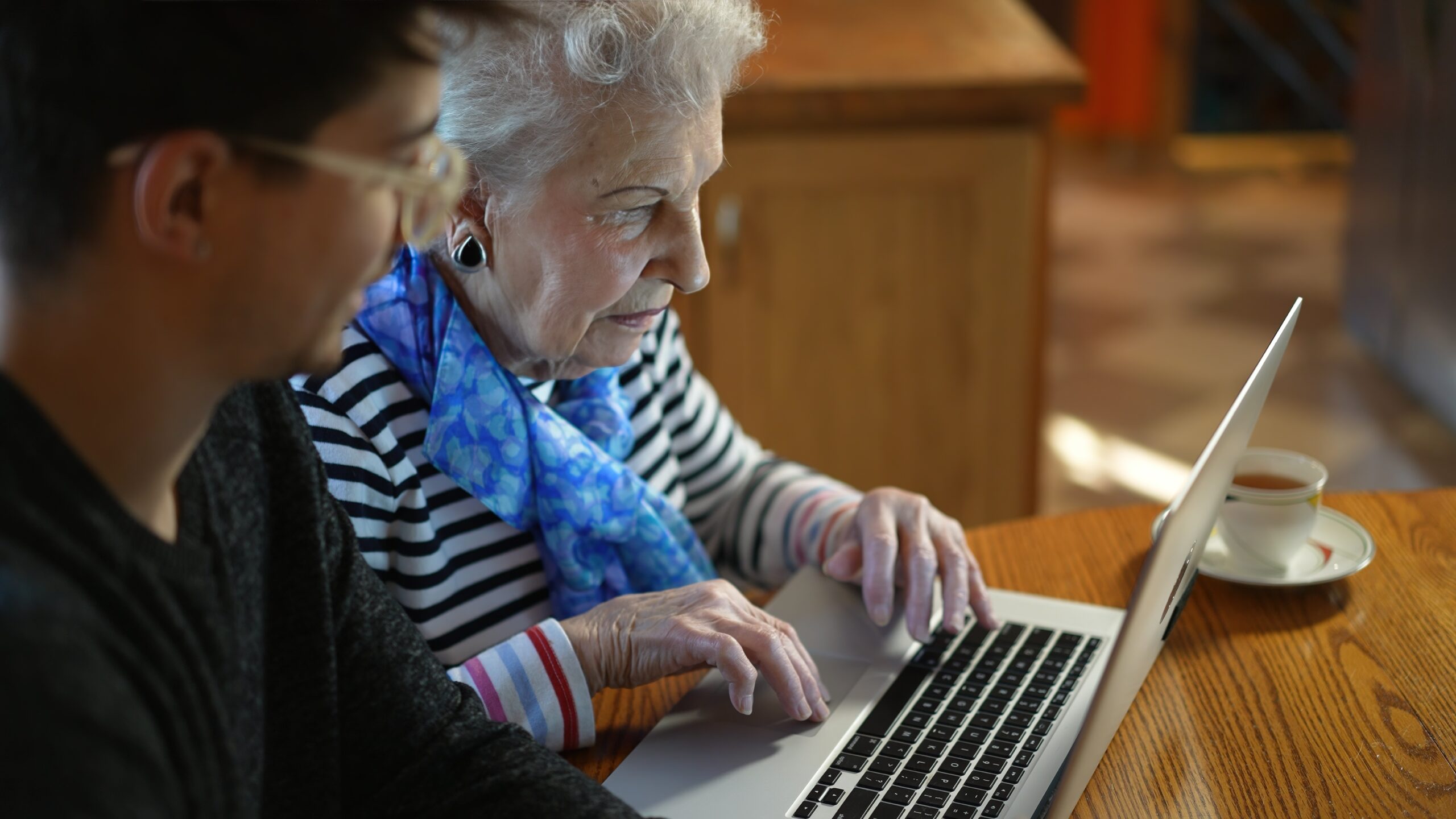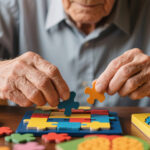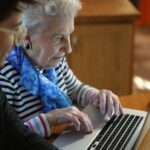Dementia is a challenging journey, not just for the individual diagnosed, but for their entire family. As the global population ages, the prevalence of dementia continues to rise, bringing with it an increasing need for effective, compassionate, and sustainable care solutions. While professional care facilities play a vital role, many families prefer to keep their loved ones at home, surrounded by familiar comforts and cherished memories. This desire for in-home care, however, often comes with its own set of complexities and demands, placing significant emotional, physical, and financial burdens on family caregivers.
In this evolving landscape, technology has emerged as a powerful ally, offering innovative solutions that can profoundly enhance the quality of life for individuals with dementia and provide much-needed peace of mind for their caregivers. Far from being cold or impersonal, the right technological tools, when integrated thoughtfully and empathetically, can foster greater independence, improve safety, and facilitate meaningful connections. This article explores the diverse array of technology solutions available today, demonstrating how they can empower families, alleviate caregiver stress, and create a more supportive and secure home environment for those living with dementia. We will delve into practical applications, discuss important considerations for implementation, and highlight how these innovations are shaping a more hopeful future for dementia care at home.
Understanding the Challenges of Dementia Care at Home
Caring for a loved one with dementia at home is a profound act of love, yet it is also fraught with unique and often overwhelming challenges. The progressive nature of dementia means that the needs of the individual change over time, requiring caregivers to constantly adapt and learn. Understanding these core challenges is the first step toward identifying how technology can provide meaningful support.
One of the most prominent difficulties stems from cognitive decline and memory loss. Individuals with dementia may struggle with short-term memory, forgetting recent conversations, appointments, or even where they placed everyday objects. This can lead to frustration, anxiety, and a sense of disorientation. As the disease progresses, long-term memory can also be affected, blurring the lines between past and present and making it difficult for individuals to recognize familiar faces or places. This cognitive impairment directly impacts their ability to perform daily tasks, manage finances, or even engage in simple decision-making.
Safety concerns are paramount for families providing in-home dementia care. Wandering, a common symptom, poses a significant risk, as individuals may leave the home and become lost or disoriented, especially in unfamiliar surroundings. Falls are another major hazard, often exacerbated by impaired balance, judgment, or vision. The risk of accidents in the kitchen, such as leaving a stove on, or mismanaging medications, further adds to caregiver anxiety. Ensuring a safe environment while preserving a sense of freedom and dignity is a delicate balance that caregivers constantly strive to maintain.
Managing daily routines and medication becomes increasingly complex. What was once a simple task, like taking pills at a specific time, can become a source of confusion and resistance. Remembering appointments, maintaining personal hygiene, and preparing meals often require constant supervision and assistance. The disruption of routines can lead to agitation and behavioral changes, making caregiving even more demanding. Caregivers often find themselves acting as personal assistants, nurses, and activity coordinators, all while trying to maintain their own lives.
Perhaps one of the most insidious challenges is caregiver burden and stress. The relentless demands of dementia care can lead to physical exhaustion, emotional burnout, and social isolation. Caregivers often sacrifice their own careers, hobbies, and social lives to provide round-the-clock support. The emotional toll of watching a loved one decline, coupled with the practical difficulties, can result in depression, anxiety, and a diminished sense of well-being. This stress is often compounded by feelings of guilt, inadequacy, or resentment, creating a complex emotional landscape that can be difficult to navigate alone.
Recognizing these multifaceted challenges underscores the critical need for innovative solutions that can ease the burden on caregivers, enhance the safety and independence of individuals with dementia, and ultimately improve the overall quality of life for everyone involved. Technology, when thoughtfully applied, offers a beacon of hope in addressing many of these pressing issues, transforming the landscape of in-home dementia care.
Categories of Technology Solutions
Technology solutions for dementia care are diverse, ranging from simple assistive devices to sophisticated smart home systems. These innovations can be broadly categorized based on the primary needs they address, offering targeted support for safety, cognitive function, communication, medication management, and caregiver coordination.
1. Safety and Monitoring Devices
Ensuring the safety of an individual with dementia is often a caregiver’s top priority. Technology offers several robust solutions to mitigate risks such as wandering and falls, providing a crucial layer of protection and peace of mind.
GPS Trackers and Wearables: One of the most significant concerns for caregivers is the risk of wandering. Individuals with dementia may become disoriented and leave the home, potentially putting themselves in dangerous situations. GPS trackers, often integrated into watches, pendants, or shoe inserts, allow caregivers to monitor their loved one’s location in real-time. These devices can be set up with geofencing capabilities, alerting caregivers via smartphone if the individual crosses a predefined safe zone. This technology not only helps prevent dangerous wandering incidents but also reduces caregiver anxiety, knowing they can quickly locate their loved one if needed. The discreet nature of many modern wearables ensures that the individual’s dignity is maintained while providing essential safety.
Smart Home Sensors: The home environment itself can be made safer through the strategic deployment of smart sensors. Motion sensors can detect unusual activity patterns, such as a person getting out of bed in the middle of the night or entering an off-limits area. Door and window sensors can alert caregivers if an exit point is opened, further preventing wandering. Fall detection sensors, which can be worn or integrated into flooring, are invaluable. These devices can automatically detect a fall and send an alert to caregivers or emergency services, enabling a rapid response that can be critical in preventing serious injury. Activity monitoring systems can learn an individual’s routine and flag deviations, indicating a potential problem. For instance, if a person hasn’t opened the refrigerator by a certain time, an alert could be sent, prompting a check-in.
In-Home Cameras: While the use of in-home cameras requires careful consideration of privacy and ethical implications, they can offer significant benefits for remote check-ins and monitoring. Placed strategically, cameras can allow caregivers to visually confirm their loved one’s well-being, observe their activities, and respond quickly to any immediate needs without being physically present 24/7. Modern smart cameras often include features like two-way audio, allowing for direct communication, and night vision, ensuring monitoring capabilities around the clock. It is crucial to have open discussions with the individual (if capable) and family members about the use of cameras to ensure comfort and respect for privacy.
2. Cognitive Support and Memory Aids
Maintaining cognitive function and supporting memory are key aspects of dementia care. Technology can provide gentle yet effective assistance, helping individuals retain a sense of independence and manage daily life more effectively.
Smart Clocks and Calendars: Disorientation regarding time and date is common in dementia. Smart clocks and digital calendars can display the time, day, date, and even upcoming appointments in large, easy-to-read formats. Some advanced versions can provide verbal reminders for daily tasks, meals, or medication, helping to maintain a structured routine and reduce confusion. These devices can be customized to display information in a way that is most helpful for the individual, promoting a sense of order and predictability.
Digital Memory Aids: Personalized digital memory aids can be incredibly beneficial. These might include digital photo frames that cycle through familiar family photos with captions, or tablets loaded with personalized content such as favorite music, old home videos, or simple games that stimulate cognitive function. Apps designed for memory recall can present prompts related to personal history, helping individuals engage with their past and maintain a sense of identity. The ability to customize these aids with familiar and comforting content makes them particularly effective.
Voice Assistants: Devices like Amazon Echo or Google Home can serve as simple, intuitive interfaces for individuals with dementia. They can answer questions, play favorite music, provide weather updates, or set reminders with simple voice commands. For example, a caregiver could program a reminder for medication or a meal, and the voice assistant would deliver it at the appropriate time. This hands-free interaction can be less intimidating and more accessible for individuals who struggle with traditional interfaces.
AR/VR for Cognitive Rehabilitation: Augmented Reality (AR) and Virtual Reality (VR) technologies are emerging as promising tools for cognitive rehabilitation. While still largely in research phases, these immersive experiences can offer engaging therapies that stimulate memory, attention, and problem-solving skills in a safe and controlled environment. For example, VR simulations can transport individuals to familiar places or allow them to engage in activities that might otherwise be inaccessible, providing mental stimulation and a sense of normalcy.
3. Communication and Social Connection
Maintaining communication and social connections is vital for emotional well-being, yet dementia can make these interactions challenging. Technology can bridge these gaps, fostering connections and reducing feelings of isolation.
Simplified Communication Devices: Traditional smartphones and tablets can be overwhelming for individuals with dementia. Simplified communication devices, often tablets with custom interfaces, feature large buttons, limited options, and pre-programmed contacts for easy video calls with family and friends. These devices reduce cognitive load and make it easier for individuals to connect with loved ones, combating loneliness and maintaining important social bonds. The visual nature of video calls can also be particularly helpful for those who struggle with auditory processing.
Digital Companions: Digital companions, such as robotic pets or AI-powered avatars, are designed to provide comfort, companionship, and engagement. These devices can respond to touch, voice, and movement, offering a sense of interaction and reducing feelings of loneliness and anxiety. While not a replacement for human interaction, they can provide a soothing presence and gentle stimulation, particularly during times when caregivers are occupied or unavailable.
4. Medication Management and Health Monitoring
Medication adherence and health monitoring are critical for individuals with dementia, but often present significant challenges. Technology offers solutions to ensure medications are taken correctly and health changes are promptly detected.
Smart Medication Dispensers: Forgetting to take medication, taking the wrong dosage, or taking medication at the wrong time are common issues in dementia care. Smart medication dispensers can be programmed to dispense the correct pills at the scheduled times, often with audible and visual reminders. Some devices can alert caregivers via an app if a dose is missed or if the dispenser is tampered with, providing an essential safety net. This technology significantly reduces the burden on caregivers to constantly monitor medication schedules and ensures the individual receives their prescribed treatment.
Remote Health Monitoring: Beyond medication, remote health monitoring devices can track vital signs such as heart rate, blood pressure, and sleep patterns. Wearable sensors or in-home devices can collect this data passively and transmit it to caregivers or healthcare providers. Significant changes or concerning trends can trigger alerts, allowing for early intervention and preventing potential health crises. This proactive approach to health management can improve outcomes and reduce the need for urgent medical attention.
5. Caregiver Support and Coordination
Caregivers are the backbone of in-home dementia care, and technology can provide invaluable support to ease their burden and improve coordination of care.
Caregiver Apps and Platforms: A multitude of mobile applications and online platforms are designed specifically for dementia caregivers. These tools can help with task management, scheduling appointments, organizing medical information, and facilitating communication among family members and professional care teams. Some apps offer educational resources, support forums, and even stress-reduction exercises for caregivers, recognizing the immense emotional and practical demands of their role. These platforms create a centralized hub for managing all aspects of care, streamlining processes and reducing administrative stress.
Telehealth and Remote Consultations: Telehealth has revolutionized access to healthcare, and it is particularly beneficial for dementia care. Remote consultations with doctors, specialists, and therapists can reduce the stress and logistical challenges of transporting an individual with dementia to appointments. This allows for more frequent check-ins, medication adjustments, and therapy sessions from the comfort and familiarity of home, ensuring continuous access to professional medical advice and support.
Integrating Professional Care with Technology
While technology offers remarkable solutions, it is most effective when integrated with compassionate, professional human care. Technology should augment, not replace, the invaluable role of caregivers. For families navigating the complexities of dementia, understanding when and how to bring in professional support is crucial.
Specialized dementia caregivers possess the expertise and training to understand the nuances of the disease, manage challenging behaviors, and provide personalized care that technology alone cannot. They can help implement and optimize technology solutions, ensuring they are used effectively and tailored to the individual’s evolving needs. These professionals offer hands-on assistance, emotional support, and skilled observation that are essential for comprehensive care. They can also provide much-needed respite for family caregivers, preventing burnout and allowing them to recharge.
There comes a point when the demands of in-home care may exceed what family caregivers, even with technological assistance, can realistically provide. This is when considering options like 24-hour care or transitional care services becomes vital. For instance, if a loved one requires constant supervision due to advanced wandering tendencies, or if their medical needs become too complex for family management, professional in-home care agencies like Sharp Home Care can step in. They offer dedicated, round-the-clock support, ensuring safety, comfort, and expert medical attention. Transitional care services, also provided by agencies such as Sharp Home Care, can be particularly beneficial after a hospital stay, helping individuals smoothly transition back home with appropriate support and monitoring.
Medical emergencies are an unfortunate reality for many individuals with dementia. During such times, or when a dementia patient needs specialized hospital sitting services, it is crucial to have professional support. Organizations like The Hospital Sitters provide dedicated sitters who are experienced in caring for individuals with dementia in a hospital setting. They offer continuous companionship, help prevent falls, manage agitation, and communicate effectively with medical staff, ensuring the patient’s comfort and safety during what can be a very disorienting experience. Having such specialized support can make a significant difference in the outcome and overall experience of a hospital stay for a dementia patient and their family.
Choosing the Right Technology: Considerations for Families
With the myriad of technology solutions available, selecting the right tools can feel overwhelming. Families should approach this decision thoughtfully, considering several key factors to ensure the chosen technology genuinely enhances care and quality of life.
Assessing Individual Needs and Preferences: There is no one-size-fits-all solution in dementia care. The most effective technology will be tailored to the individual’s specific stage of dementia, their cognitive abilities, personal preferences, and daily routines. What works for someone in early-stage dementia might be inappropriate for someone in advanced stages. Involve the individual in the decision-making process as much as possible, respecting their autonomy and preferences. Consider their comfort with technology, their past habits, and what activities they enjoy.
Ease of Use and Accessibility: Technology should simplify, not complicate. Choose devices and platforms that are intuitive, easy to operate, and require minimal technical expertise from both the individual with dementia and their caregivers. Large buttons, clear displays, voice activation, and simple interfaces are often preferable. Ensure the technology is accessible, considering any physical limitations such as impaired vision, hearing, or dexterity.
Cost and Long-Term Investment: The cost of technology solutions can vary widely. Families should consider not only the initial purchase price but also ongoing costs such as subscriptions, maintenance, and potential upgrades. Evaluate the long-term benefits and how the technology will adapt as the individual’s needs change. Sometimes, investing in a more comprehensive system upfront can be more cost-effective than piecing together disparate solutions over time.
Privacy and Data Security: Any technology that collects personal data, especially health-related information, must prioritize privacy and security. Families should thoroughly research the data policies of providers, understand how information is stored and shared, and ensure compliance with relevant privacy regulations. Ethical considerations, particularly regarding monitoring devices like cameras, must be openly discussed and agreed upon by all involved family members to maintain trust and respect for the individual’s dignity.
The Future of Dementia Care Technology
The field of dementia care technology is rapidly evolving, driven by advancements in artificial intelligence, sensor technology, and personalized medicine. The future promises even more sophisticated and integrated solutions that will further empower individuals with dementia and their caregivers.
Emerging Trends and Innovations: We can anticipate the development of more predictive analytics, where AI systems learn individual patterns and can anticipate potential risks or needs before they arise. Miniaturized and less intrusive wearable sensors will become more common, offering continuous, seamless monitoring. Robotics will likely play a larger role, not just as companions but also in assisting with daily tasks, providing physical support, and even administering basic care under supervision.
Personalized and AI-Driven Solutions: The trend is moving towards highly personalized care, where technology adapts to the unique cognitive and physical profile of each individual. AI will be instrumental in creating adaptive learning programs, personalized cognitive exercises, and smart environments that dynamically adjust to the user’s needs and preferences. Imagine a home that intuitively adjusts lighting, temperature, and even prompts based on an individual’s mood or activity, all designed to reduce agitation and promote well-being.
Conclusion
Technology solutions for dementia care at home represent a profound shift in how we approach this challenging condition. From enhancing safety and providing cognitive support to facilitating communication and easing caregiver burden, these innovations offer tangible benefits that can significantly improve the quality of life for individuals living with dementia and their families. By embracing these tools thoughtfully and integrating them with compassionate professional care, we can create environments that foster independence, dignity, and peace of mind.
The journey of dementia care is undeniably difficult, but it is not one that families must walk alone. With the continuous advancements in technology and the unwavering support of dedicated caregivers and specialized services, a future where individuals with dementia can live fulfilling lives in the comfort of their homes is not just a dream, but an increasingly achievable reality. These technological advancements, coupled with human empathy and expertise, offer a powerful combination, providing hope and practical solutions for families navigating this complex path. The goal remains to empower, protect, and connect, ensuring that every individual with dementia receives the care and respect they deserve, right where they feel most at home.















